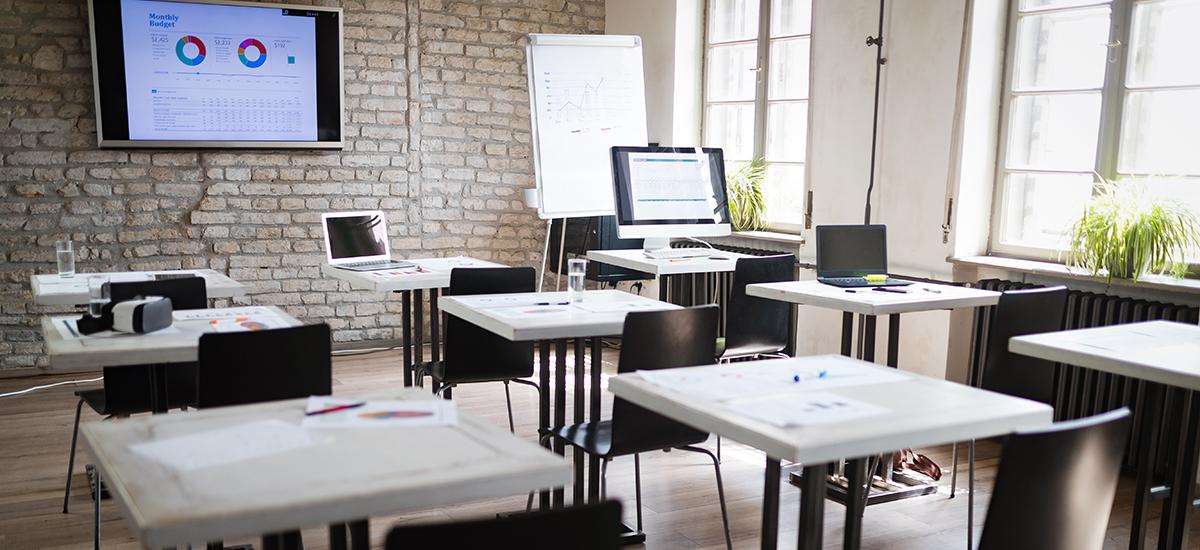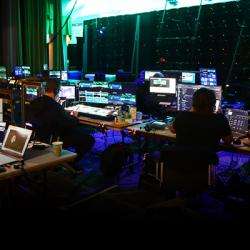Higher Education Classroom of the Future in the 21st Century from an AV Integrator Perspective

Higher education classrooms have experienced many changes during the last few years. Institutions have begun offering cyber classes or distant learning models to increase enrollment, which is imperative for many schools. Even if the room isn’t a complete cyber classroom, there is a mix of remote visibility into the classrooms for a student out sick or traveling for work, etc. As a result, those classrooms will require a video conferencing system with microphones and cameras, etc.
Many schools have also started using active learning techniques in classrooms. Instructors that utilize active learning facilitate interaction among students rather than simply disseminating information. Some examples of active learning techniques include; role-playing, case studies, group projects, think-pair-share, peer teaching, debates, Just-in-Time teaching, and short demonstrations followed by class discussion.
Classroom Overflow: AV Stream from Another Classroom.
Another new method of increasing collaboration and communication is using a classroom as an overflow from another space. The use of this method allows a classroom to see and hear what is going on in another space. This technological innovation increases sharing within a school or department.
These new teaching methods all help create the four C’s:
- COLLABORATION: Students work effectively with diverse groups and compromise to achieve common goals.
- CREATIVITY: Students generate and improve original ideas, and also work creatively with others.
- COMMUNICATION: Students communicate effectively across multiple media platforms and for various purposes.
- CRITICAL THINKING: Students analyze, evaluate and understand complex systems, and apply strategies to solve real-life problems.
Three modern concepts are:
- Clusters, pods, huddle rooms
- Learning zones or collaboration classrooms
- Teacher mobility
Clusters, Pods or Huddle Rooms
Small clusters of chairs and desks accommodate today’s learners who prefer interactive and social activities. It allows students to work collaboratively in compact pods of two to six, to interact directly, see facial expressions, and establish eye contact.
Learning Zones or Collaboration Classrooms
These types of rooms turn one classroom into several defined spaces that direct the desired learning behavior. These spaces can include a collaborative zone, independent learning zone, play zone, maker zone and more. There are no limits. Defined learning zones empower students to move freely to the area that meets their educational needs. Moving to various areas helps students both learn and retain more.
Teacher Mobility
Whether an instructor is teaching In a learning zone, collaboration classroom or the classroom of the future, they should have the ability to move freely around the room with no barriers. Today’s learners prefer instant access to information. A mobile teacher can meet this need by moving easily from group to group to field questions and facilitate discussions.
So say good-bye to the outdated classroom
Space layout will no longer consist of desks and chairs in a straight row. Classrooms will feature multi-use learning zones spread throughout the room with wireless access. Instructors’ roles will no longer consist of standing at the front of the classroom for the duration of the class. Teachers will be roving instructors, helpers, and facilitators that are mobile. They will work from different locations in the room or at the center of the room with viewing access to various learning zones. Students will no longer simply listen quietly and take notes. They will be collaborative problem solvers, makers, and content generators.
Article written by Bill Kiley, IMS Senior Account Executive (wkiley@imsts.com | 484-390-1866)
Ready to Upgrade Your Classrooms?
IMS works with schools and budgets of all sizes and scenarios, from new construction to select classroom upgrades. Please let us know how we can help. We are interested in learning about your classroom initiatives.
Share This Article
Categories
Latest Posts

Philadelphia 2026: Is Your Venue Ready for the Spotlight?

Scalable AV Infrastructure for Life Science Enterprises

Extend Your Reach: The Power of Virtual and Hybrid Events

Why Every Detail Matters in Investor and Year-End Meetings

IMS Technology Services Welcomes John Beaulieu
Tags
Contact Us
- Headquarters: 3055 MCCANN FARM DRIVE, GARNET VALLEY, PA 19060
- Event Staging: 2000 COLUMBIA AVENUE, SUITE 300, LINWOOD, PA 19061
- Southeast Office: 404 SUNPORT LANE, SUITE 350, ORLANDO, FL 32809
- Phone: + 610-361-1870
- Contact Us
Services
Recent Posts

Philadelphia 2026: Is Your Venue Ready for the Spotlight?

